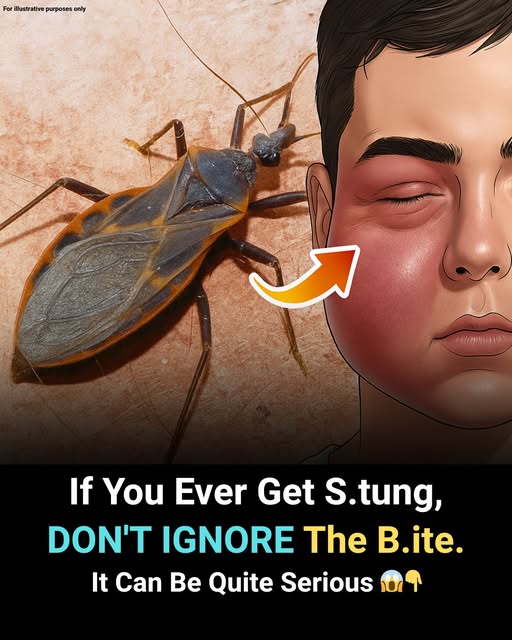Summertime means sunshine, long days, and time outdoors — but it also brings unwanted pests. While mosquitoes and ticks often get the most attention, another insect is quietly spreading: the kissing bug. Though less familiar to many people, kissing bugs can pose serious health risks, making awareness and prevention extremely important.
What Are Kissing Bugs?
Kissing bugs, scientifically known as triatomines, are nocturnal blood-feeding insects. They hide during the day in cracks, crevices, and animal nests, then come out at night to feed — usually when people are asleep. Because their saliva contains a numbing agent, most bites go unnoticed.
These insects are attracted to the carbon dioxide in human breath, which is why they often bite around the mouth or eyes. Their bites typically appear in small clusters on the face. Although they naturally live in wooded areas and in the nests of rodents or birds, they can easily enter homes through broken screens, gaps, or cracks in walls.
Kissing bugs are most widespread in South and Central America and Mexico, where they are strongly linked to Chagas disease. However, increasing cases in the southern United States are causing growing concern.
How to Identify a Kissing Bug
Because they resemble other insects, kissing bugs can be tricky to recognize. Look for these features:
A long, oval body about 1 inch (roughly the size of a penny)
Six legs with long, thin antennae
A cone-shaped head
A dark brown to black body with yellow, red, or tan markings
Symptoms of a Kissing Bug Bite
Reactions to bites can vary:
Mild: Small red marks near the mouth or eyes, often unnoticed
Moderate: Itching, redness, and swelling (usually eased with antihistamines)
Severe: Painful welts, hives, or — in rare cases — anaphylactic shock, which requires immediate emergency care
The Greatest Danger: Chagas Disease
The real threat of kissing bugs isn’t the bite itself, but the parasite Trypanosoma cruzi found in their feces. Infection happens when contaminated feces enter the body through broken skin or mucous membranes, often when a person accidentally touches their mouth or eyes after being bitten.
Chagas disease has two stages:
Acute Phase (first weeks):
May cause no symptoms, or mild flu-like illness: fever, chills, rash, body aches, vomiting, diarrhea, swollen lymph nodes, and loss of appetite
Children may develop Romaña’s sign (swelling around one eye)
Chronic Phase (lifelong):
Many show no symptoms for years
But 20–30% eventually develop severe complications: heart enlargement, arrhythmias, or digestive system damage (esophagus/colon)
Early treatment in the acute stage is crucial to prevent these long-term effects.
Treatment
Chagas disease is treated with antiparasitic drugs such as nifurtimox or benznidazole. While not widely available in the U.S., doctors can request them through special programs.
⚠️ There is no cure for chronic Chagas disease, which makes early detection and treatment essential.
Preventing and Eliminating Kissing Bugs
The best defense is prevention:
Repair or install window and door screens
Seal cracks in walls, floors, and foundations
Remove brush, wood, and rock piles near your home
Limit outdoor lighting at night to avoid attracting bugs
Use insecticide-treated bed nets or curtains
If you find one indoors, don’t crush it — instead, place it in a sealed container with rubbing alcohol, or freeze it
Clean any contaminated areas with rubbing alcohol or bleach solution
When to Seek Medical Help
See a doctor if:
You live in or have traveled to an affected region (southern U.S., Mexico, Central America) and notice clusters of facial bites
You develop flu-like symptoms after being bitten
You experience a severe allergic reaction
You suspect an infestation in your home
Final Thoughts
Kissing bugs may not be as widely recognized as mosquitoes or ticks, but they are a real health concern. Not every bug carries the parasite, and not every bite leads to Chagas disease — but the risks are serious enough to take precautions.
With preventive steps and prompt medical care if symptoms appear, you can keep yourself and your loved ones safe from these unwelcome summertime visitors.
